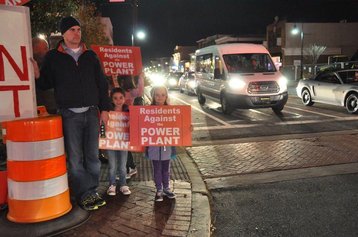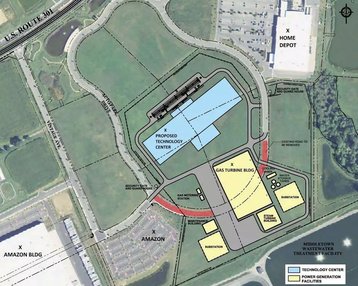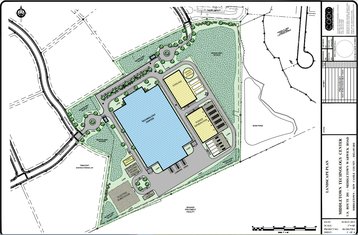A controversial data center development project by Cirrus in Delaware is being investigated by state regulators, following claims that the accompanying power plant could damage the environment, Delaware Online reports.
The project proposes a 40MW data center in Middletown, as well as a 62.5MW natural gas-driven power plant to co-generate some of the electricity required by the facility. The plant would produce backup electricity, with excess energy sold back to the grid.
Two separate studies have raised concerns about the levels of microscopic particle pollution released by such a development – the first commissioned by the state Department of Natural Resources, and the second by Cirrus Delaware LLC, which was produced by TRC Environmental Corp.
If the plant becomes operational, microscopic particulate pollution in the area would spike to 95 percent of the federal allowable daily levels at peak times, and 94 percent of the allowable annual levels, according to the Cirrus report.
Delicate balance
Should these emissions exceed federal limits four times in a three-year period, the Environmental Protection Agency could impose pollution restrictions on businesses and residences in the area, according to John Walke, attorney and director of the Natural Resources Defense Council’s Clean Air Project.
Current annual emissions in northern Delaware reach 90 percent of permissible levels, while in a 24-hour period in New Castle County they reach 80 percent, measured against National Ambient Air Quality Standards.
“It does suggest that steps by the state should be taken to build in additional controls to make sure the dangerous emissions don’t go beyond the federal limit,” Walke said.
The two studies are required as part of the federal government’s approval process, with Cirrus hoping they will enable the company to obtain an air pollution permit from the Department of Natural Resources and Environmental Control (DNREC). The studies estimate the levels of nitrogen dioxide, carbon monoxide, sulphur dioxide and microscopic particulates the power plant will release into the atmosphere.
Following review of the application a draft permit will be provided by the state department, while the public will be formally given the opportunity to comment on the proposals, according to Michael Globetti, spokesman for DNREC.
Within compliance
Cirrus spokesman and attorney Mark Dunkle told Delaware Online the reports confirm his company’s plant will meet Environmental Protection Agency standards.
“Even if all of the engines at the data center are running on a day when the background particulate levels meet the historic 24-hour level cited in the modelling, which is not likely to occur, air quality would remain in compliance,” Dunkle said.
Alongside the potential negative impact on health, the prospect of falling property prices in the area has also been the cause of consternation among local residents, as reported by DatacenterDynamics in April 2016.
Inhabitants of Delaware have been staging protests against construction of the power plant, citing its planned location less than a mile from several schools, daycare centers and senior citizens communities as the reason.
Exact readings of microscopic particulate emissions are difficult to attain, meaning true levels released by a completed power plant could diverge significantly from those predicted in the Cirrus report, said Raymond Speth, associate director of the Laboratory for Aviation and the Environment at the Massachusetts Institute of Technology.
“It’s not that below this level everything is fine, and above it everybody gets sick,” he told the publication.
Following publication, Mark Dunkle contacted DatacenterDynamics with this comment:
”The two air modeling studies are simply part of this air permit application, not driven by any complaints and both studies show the emissions even at theoretical peak usage will meet all EPA and State air quality standards.
”There are about 6 protesters out of about 20,000 local residents. The project received unanimous local government approvals.”
Blowing in the wind
State authorities have been attempting to address the issue of pollution in Delaware, last week filing petitions with the federal court with the aim of coercing neighboring states to reduce pollution, which often drifts into Delaware.
Officials said 94 percent of harmful ozone observed in the state is created by pollutants from “upwind states”, including Pennsylvania, Maryland and New Jersey.
The proposed Middletown site would cost about $350 million to develop. The state government has approved a $7.5 million grant towards the costs, subject to the production of environmental proposals and information on Cirrus’ investors.
Details of the parties making up the remainder of the $350 million have not been made publicly available. The project was first proposed in 2015 by a group of investors led by developer Dennis Silicato.
This post was updated on 18 August to include an image of plans for the Cirrus site that were submitted to Delaware’s Department of Natural Resources and Environmental Control.



